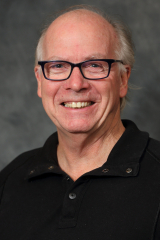
 Professor
Professor
B.Sc. (University of Toronto, 1974)
M.Sc. (University of Toronto, 1977)
Ph.D. (University of Toronto, 1985)
Principal Investigator AT&T Bell Laboratories (1984-90)
Member, McGill Institute for Advanced Materials (MIAM)
Associate Member, Centre for Optics and Physics of Lasers (COPL, Laval University)
Contact Information
Office: Otto Maass 335A
Phone: (514)398-4459
Email: mark.andrews [at] mcgill.ca
Lab: Otto Maass, 330
Lab Phone: (514)398-6915
Web Page: Andrews Group Website
Research Themes
Materials Chemistry
Research Description
Research in my laboratory unites several fields of chemistry under the rubric, Materials Chemistry. Materials chemistry is concerned with the ways in which matter can be designed to express a suite of functional properties like optical conductivity, magnetism, elasticity, piezoelectricity, and so forth. A large part of our effort is in creating materials to manage matter-photon interactions in order answer basic chemical questions like "How do biological systems deposit silica nanostructures? How are inorganic solids synthesized at interfaces to make bone, teeth and navigational sensors? How do polymers adsorb and react at interfaces? How does diffusion occur across a membrane? How can I communicate information optically?" and so forth.
Students synthesize biopolymers and photo-imaging glasses from organic and inorganic polymers, including linear chain polymers and hybrid sol-gel glasses. These polymers are then co-opted to build a micron-sized optical circuit, creating a kind of "optical chemical bench" on a chip (OCB). The concept is akin to a “lab on a chip”, but the (polymer) material that is used to make the optical circuit ends up interrogating itself with guided laser light. By this means, Raman and optical linear and nonlinear events give us an optical “read out” that tells us something about what is happening in thin films and at their interfaces.
In other cases we make new kinds of polymers to make integrated optics components and devices like biophotonic sensors, amplifiers, gratings, multiplexers and struc-tures that may be useful for optical computing. With guided wave optics we also study optical self-writing, where an optical wave inscribes its own waveguide in the host medium. This allows us to probe photoinduced anisotropy, optical self-trapping, self-lensing, spatial soliton formation and optical induction of chirality in isotropic polymers. Our work in “plasmonic nanophotonics” is concerned with the use of noble metal nanoparticles to enhance optical field interactions at interfaces to study chemical transformations on a molecular scale.
In addition to the research that is performed directly in our labs, we also work with researchers in the Photonics and Communications Industries, in Physics, Electrical and Chemical Engineering, and in Materials Science on collaborative projects.
Students in my laboratory gain experience in synthesis for Materials Chemistry (polymers, organometallics, and inorganics), microfabrication, integrated optics (including device design and fabrication), laser spectroscopic methods, scanning probe and electron microscopy, and surface chemistry. Recent graduates and PDFs are currently in academic positions, government research laboratories and in industry.
Currently Teaching